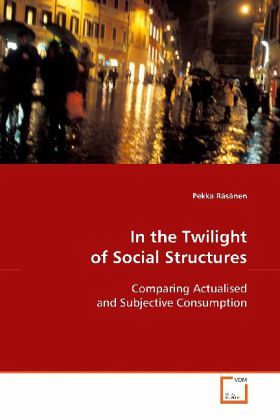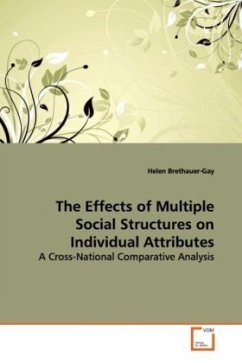
In the Twilight of Social Structures
Comparing Actualised and Subjective Consumption
Versandkostenfrei!
Versandfertig in 6-10 Tagen
39,99 €
inkl. MwSt.

PAYBACK Punkte
20 °P sammeln!
This book examines the significance of consumptionwith regard to theoretical notions of postmodernismand the consumer society. In the book, it is alsoanalysed whether consumption activities in everydaylife can be explained by structural factors incontemporary Finland. Consumption is measured ashousehold expenditure (the actualised level ofconsumption) and as individual consumption desires(the imaginary level of consumption). The findingsshow that the factors selected explain expenditurebetter than they do consumption desires. On the basisof the results, it is argued that consumption isaffected...
This book examines the significance of consumption
with regard to theoretical notions of postmodernism
and the consumer society. In the book, it is also
analysed whether consumption activities in everyday
life can be explained by structural factors in
contemporary Finland. Consumption is measured as
household expenditure (the actualised level of
consumption) and as individual consumption desires
(the imaginary level of consumption). The findings
show that the factors selected explain expenditure
better than they do consumption desires. On the basis
of the results, it is argued that consumption is
affected by linkages between a number of different
conditions, which can be approached rather similarly
at both levels of analysis. Throughout the book,
interpretations of explanatory social mechanisms are
offered in describing how individual behaviour is
connected with economic and socio-demographic structures.
with regard to theoretical notions of postmodernism
and the consumer society. In the book, it is also
analysed whether consumption activities in everyday
life can be explained by structural factors in
contemporary Finland. Consumption is measured as
household expenditure (the actualised level of
consumption) and as individual consumption desires
(the imaginary level of consumption). The findings
show that the factors selected explain expenditure
better than they do consumption desires. On the basis
of the results, it is argued that consumption is
affected by linkages between a number of different
conditions, which can be approached rather similarly
at both levels of analysis. Throughout the book,
interpretations of explanatory social mechanisms are
offered in describing how individual behaviour is
connected with economic and socio-demographic structures.












